Past Winners
Past WinnersResus:Station
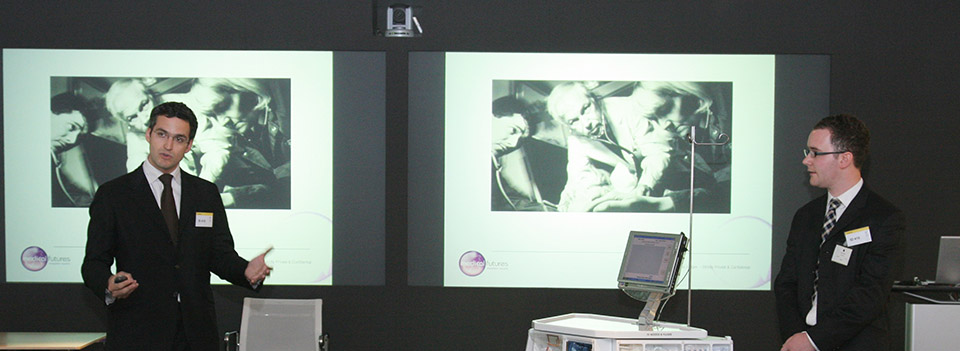
Mr James Kinross, Jonathan West & Team
Overall Winner of the Anaesthesia & Critical Care Innovation Awards 2007
This is a novel design & technology solution to help improve the resuscitation of the 43,000 patients a year in the UK who have a cardiac or respiratory arrest on a hospital ward. The design provides a platform from which to run resuscitation attempts, improving access to equipment and helping to define the resuscitation team's roles. With its advanced touch screen software it can guide, monitor and record the team's actions, enabling improved patient care. It will also allow the team to receive feedback to improve their future performance, hopefully allowing the average survival rate of 19% to be increased.
Sensagest- Pure Ability
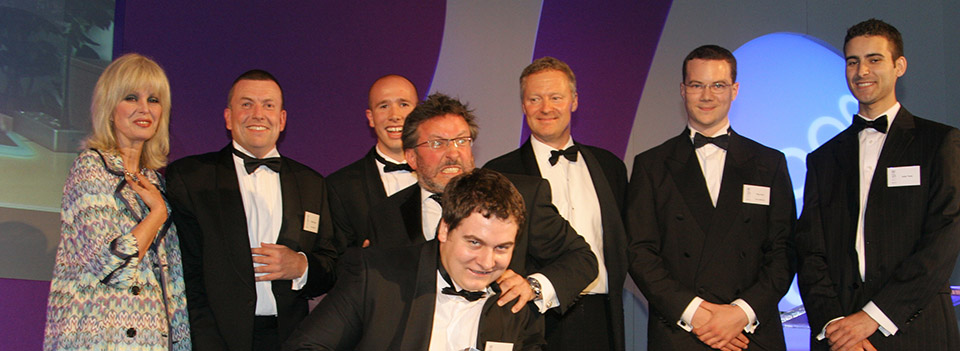
Ian Anderson, Chris Groves & Paul Duff
Overall Winner of the Bone & Joint Innovation Awards 2007
This is a novel smart fabric that aims to bring independence to sufferers of spinal injuries or stroke. Following an accident ten years ago, an engineer from Bristol, who was left paralysed, felt helpless during his hospital stay because he was unable to use his hands to call the nurse. He started by developing a nurse call system that is activated by tiny movements on a fabric pad placed under the patient. Using programmable fabric keyboards, he hopes to adapt the technology to new solutions that will bring independence to its users both in hospital and in their homes. The inventor has set up a company and the products are expected to be available later this year.
Cancer Biomarkers
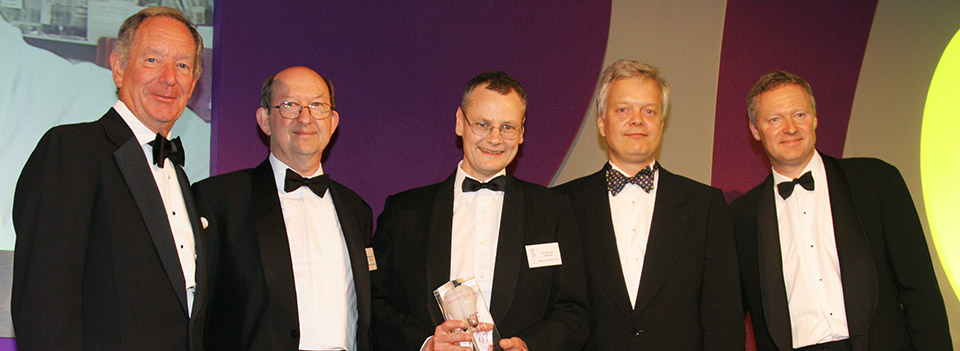
Dr Nicholas Coleman & Professor Ron Laskey
Overall Winner of the Cancer Innovation Awards 2007
This is an ingenious biotechnology that could revolutionise cancer screening. Each year, well over a quarter of a million people are diagnosed with cancer in the UK alone. Detection of early stage disease through screening is an important way to reduce cancer deaths, as the earlier a tumour is diagnosed the greater the chance of survival. Scientists from Cambridge have identifi ed a novel marker that is present in cancer cells but not in normal cells. They believe their new system is more accurate and will pick up certain cancers, such as cervical, bowel or lung cancer, earlier and more accurately. The technology is currently in clinical trials and could be widely available within the next 2 years.
Psynova Neurotech- Blood Test for Mental Illness
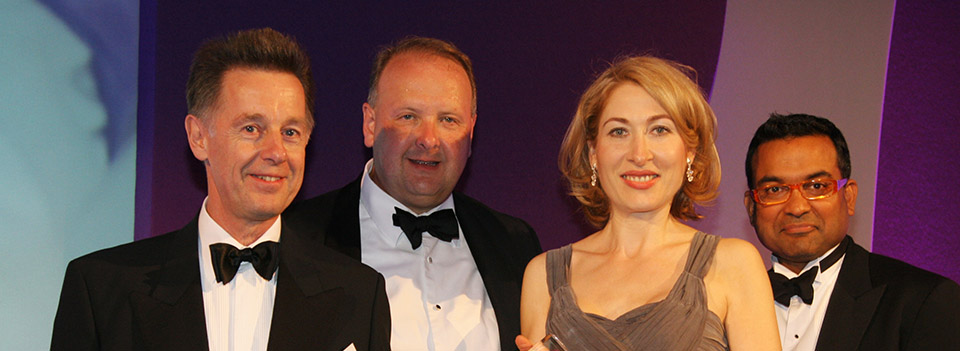
Dr Sabine Bahn & Professor Chris Lowe
Overall Winner of the Mental Health & Neuroscience Innovation Awards 2007
This is a blood test to diagnose mental health diseases such as depression or schizophrenia. Using novel bio-markers the team are developing a simple blood test to pick up those predisposed to mental illness long before they ever present with symptoms. They also hope to be able to assist in the production of targeted therapeutics in psychiatry. Mental illness now affects one in four people across the socioeconomic spectrum. The World Health Organisation predict that depression will be the second biggest healthcare burden on mankind by 2020, ahead of cancer and HIV, demonstrating the need for this technology.
Nanotechnology for Implanted Devices
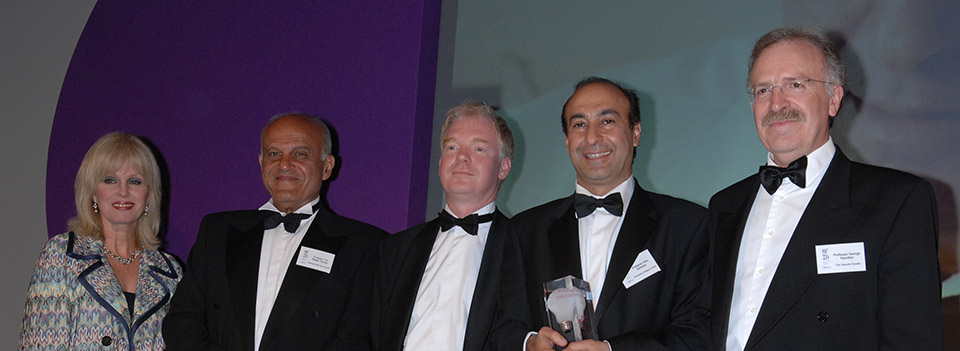
Dr Alexander Seifalian, Professor George Hamilton, Mr A. Darbyshire & Dr Henryk Salacinski
Overall Winner of the Cardiovascular Innovation Awards 2007
We have developed a novel nanomaterial for the development of cardiovascular medical devices including blood vessels and heart valves. It is common in patients with vascular disease for their blood vessels to become blocked, one of the surgical treatments is to bypass the blocked vessel using a vein taken from the patients own leg. Many patients do not have suitable veins for this purpose and the currently used artificial materials have poor results. A team of scientists from University College London have developed a coronary artery bypass graft using this novel polymer incorporating bioactive molecules that encourage endothelialisation of the graft from circulating stem cells. The graft has been extensively tested in vitro and in vivo and has been shown to have a high success rate. This innovation will revolutionise cardiac surgery and may have a wider application in preventing organ rejection.
Genesearch - Breast Cancer Diagnosis
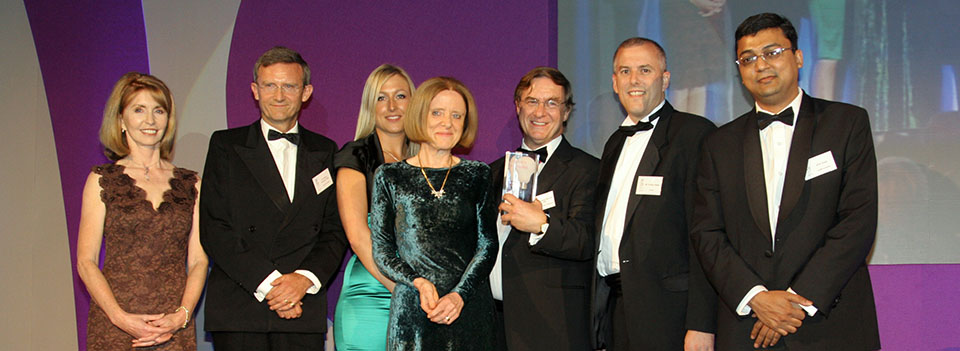
Mr Amit Goyal, Professor Robert Mansel & Tim Pitfield, University of Cardiff
Winner of the Best National Health Innovation Award 2007
This is an exceptional NHS service using a state-of-the-art technology to speed up the diagnosis of breast cancer. Affecting over 37,000 women each year, breast cancer is the commonest female cancer in the UK. During surgery, a lymph gland is taken from the armpit and sent to the laboratory to check for spread, although in many hospitals the results can take up to five days. If the gland is positive then the patient may be recalled for a second operation to remove further lymph glands. A surgical team from Cardiff have developed a service which utilises the latest DNA technology to test the lymph gland, actually in the theatre at the time of surgery. If positive the definitive surgery takes place there and then, saving up to a third of women the need to undergo a second operation. The team aim to promote their service across the NHS, improving patient experiences and saving significant costs.
Glide Pharma Ltd
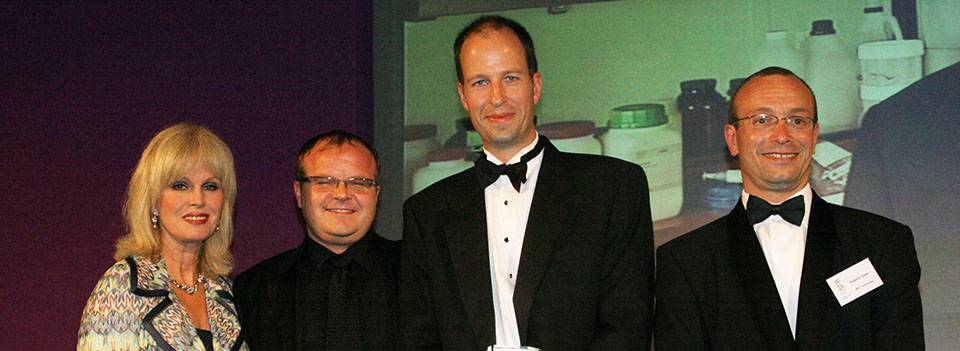
Dr Charles Potter
Overall Winner of the Business Innovation Awards 2007
Glide Pharma has developed the Glide Solid Dose Injector (SDITM), a needle-free drug delivery system that injects drugs in solid form. A tiny rod of medication is pushed into the skin at low velocity using a simple, handheld, reusable device. Volunteers prefer the system over needles because not only is there no risk of accidental needle stick injury and hence risk of spread of blood borne illnesses, but also delivery is over in a fraction of a second.
Easy to use and requiring no specific training, the system is ideal for self-administration and because the solid medication has a longer shelf life and does not require refrigeration, the system is an ideal platform for large vaccination programmes in the developing world.
Within weeks of winning the Best Business Proposition at the Medical Futures Innovation Awards in 2007, specialty pharmaceutical company, Glide Pharma, raised £2.3 million of investment. Since that time, progress has been swift and the Glide SDITM is now in feasibility studies with five partners, including two of the top 10 pharmaceutical companies in the world.
Positive Mental Attitude Football League
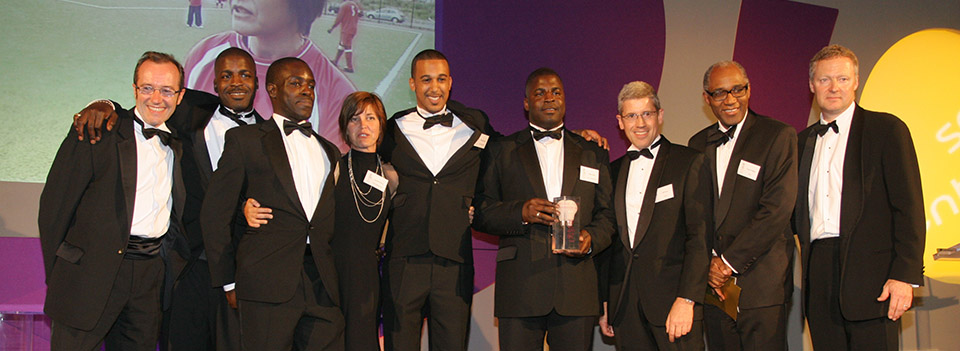
Janette Hynes
Social Entrepreneur of the Year 2007
Janette won her Award for founding a football league for those suffering from mental health problems. Janette is an an NHS Occupational Therapist who used football to help her patients in hospital, but noted that they had no team to play with when they were discharged to the community. Despite resistance from prevailing attitudes in mainstream football she set up the Positive Mental Attitude League (PMAL) using her experience of being a past professional footballer. The PMAL now has 14 teams and 20 waiting to join and has demonstrated better physical and mental health for its players, many having lost weight, stopped smoking and secured employment. In addition, because her league is closely linked into social services, absence from training allows a player who is relapsing to be picked up much sooner. She aims to scale up the league across the country and eventually into Europe.
K5 - Vacuum Safety Syringe
Star Syringe R&D Team
Winner of the Conceptual Design Award in the Anaesthesia and Critical Care Innovation Awards 2007
K5 is a novel modification to existing syringes. K5 is a very simple patented squeeze mechanism. Using it creates a temporary vacuum inside the barrel of a syringe, allowing the user to make sure the needle is not inadvertently inside a blood vessel, when giving intramuscular injections. In normal syringes the operator needs to pull back on the plunger to create this vacuum, which takes much longer, and can cause movement of the needle and pain to the patient. Checking the location of the needle before injection is crucial in any injection, so the K5 team aim to license the technology to existing syringe manufacturers so that it becomes standard in all of the estimated 20 billion syringes used annually around the world, just like Lycra or Intel are to clothes or computers.
Mediracer - Carpal Tunnel Diagnosis
Veijo Lesonen & Mr Tim Green
Winner of the Best Diagnostic in the Bone & Joint Innovation Awards 2007
This is a new device that can diagnose carpal tunnel syndrome in an out patient setting. Carpal tunnel syndrome is a painful condition most commonly affecting middle aged women. Symptoms include pain and tingling in the fingers and often sufferers drop things accidentally. The cause is squashing of a nerve in the wrist and diagnosis is confirmed using a special nerve test that can take 9 months to arrange in many centres due to long waiting lists. This new device is hand held and allows instant diagnosis in an out-patient setting. It was developed in Finland but tested by a team of British Orthopaedic surgeons who have now developed a one stop service for treating carpal tunnel syndrome and have virtually abolished their waiting lists from 106 weeks to nil.
Surving Major Surgery
Dr Jonathan Wilson, Sister Lynne Atkinson & Dr Michael Stone
Winners of an Anaesthesia & Critical Care Model of Service Award 2007
This is a state-of-the-art assessment system for patients planning to undergo major surgery. Doctors from York have developed a rigorous pre-surgical testing system that includes a session on an exercise bicycle. The team then decide whether the patient is fit enough for surgery, and if not, how they can be improved. Their system is more rigorous than pre-assessments elsewhere and also directs treatments using drugs or the appropriate use monitoring during surgery, to improve the patient’s outcome. So far results have been highly impressive with survival rates considerably better than the national average and patients spending far fewer days in intensive care. The team hope that their system can become standard practice across the NHS.
Vibone
Mr Ben Bolland & Mr Douglas Dunlop
Winner of the Best Surgical Technology in the Bone & Joint Innovation Awards 2007
Vibone is a new device to impact bone graft and is designed to be used in revision hip surgery when large bone loss is often encountered. Hip replacements have a limited life span and as people live longer, the need for revision hip surgery is increasing. When the THR wears and becomes loose, large areas of bone around the implant are destroyed. Bone graft is impacted to replace the areas of bone loss, reconstructing the normal anatomy and providing sufficient support for the new implant. Inspired by techniques used in everyday civil engineering applications to impact aggregates such as in road building and foundation laying, a team of surgeons from Southampton have developed a vibration impactor which has been shown to result in a safer more reliable method to impact bone with tighter graft impaction and improved support for the prosthesis. They hope this will translate to improved longevity of revision hip replacements using this reconstruction technique.
Magnet Hip
Paul Lee and Michael Clarke
Winner of the Best Joint Replacement Idea in the Bone & Joint Innovation Awards 2007
This is a new type of hip replacement that aims to last the patient’s lifetime. The commonest cause for long term hip replacement failure is implant loosening due to microscopic wear articles, produced by the grinding of articulating joint interfaces. The new metal hip replacement, invented by orthopaedic surgeons, has a built-in magnet and a special reservoir to trap wear debris. The design was inspired by motor vehicle engine-lubrication systems which also use magnets to filter out wear debris. The inventors aim to license this hip replacement solution.
Detecting Colorectal Cancer Using An Endomicroscopy Laser
Dr Paul Hurlstone & Dr Simon Cross
Winner of the Best Diagnostic in the Cancer Innovation Awards 2007
This is a novel diagnostic and treatment for early bowel cancer. A doctor from Sheffi eld has developed a technique to attach a special microscope to the end of a colonoscope, the instrument used to inspect the lining of the bowel. If during the out-patient procedure the doctor sees a suspected cancer, he can use a special laser to see through the bowel wall in real time and tell whether the cancer has spread. Traditional colonoscopy uses a telescope and white light, allowing the doctor to see only the surface of the tissue. Because the new technique can see through the wall it allows for an instant diagnosis and a quick decision on whether to treat the cancer there and then or refer the patient on for surgery. The device is currently in trials but preliminary results have been extremely encouraging.
RAPA - Electronic Admission Alert System For Cancer Patients
Julie Pipes, Clive Gie, June Morely, Giles Cox & Team, Sherwood Forest NHS Hospitals Trust
Winner of the Best Health eHealth Award in the Cancer Innovation Awards 2007
This is an electronic tracking service for cancer patients. A team from Nottinghamshire have developed an IT solution that ensures that all cancer patients admitted via A&E to hospital have their own doctor and case manager automatically notified. Previously, patients admitted to hospital under other teams for a problem unrelated to their cancer, could be on the wards for days before anyone thought to inform their cancer specialist that they are in hospital. The new system is linked to the electronic patient record and automatically informs the case managers on their Blackberry hand-held devices as soon one of their patients is admitted to hospital. This enables immediate attention and streamlined care, improving efficiency and allowing patients to be discharged earlier.
Monitoring Service For Haematology Cancers
Dr Andy Rawstron, Dr Andrew Jack & Dr Roger Owen, Leeds Teaching Hospitals NHS Trust
Winner of a Model of Care Award in the Cancer Innovation Awards 2007
This is a service to monitor patients with haematological cancers who do not require immediate treatment. For some diseases, progression occurs slowly but monitoring is vital to stop potentially irreversible organ damage which can occur before the patients feel any symptoms. However, most patients are elderly and live many miles from the hospital, making repeated clinic visits costly and inconvenient. An NHS team from Leeds has developed a community-based service that uses IT to integrate results of blood tests and patient questionnaires and determine whether patients need to return to clinic or can remain on the service. This has provided a high quality of care in a local setting, freed up clinic appointments and given back patients control of their own disease.
Ultrasound Cardiovascular Disease Predictor
Professor Gary McVeigh, Dr Canice McGivern & Dr David Moore
Winner of the Best Diagnostic in the Cardiovascular Innovation Awards 2007
A doctor from Belfast has developed a revolutionary testing system to diagnose heart and blood vessel disease simply by looking at patterns of blood flow. Using ultrasound technology coupled with years of research, the Professor of Cardiovascular Medicine has proven that his tool is capable of predicting who is harbouring early stages of disease, allowing them to receive treatment or adjust their diet and lifestyle years before they ever get symptoms. The team aims to make this into a point of care testing system that will be available in GP surgeries.
Integrated Vascular Access
Dr Stephen D'Souza, Mary Donnelly & Catherine Silcock, Royal Preston Hospital NHS Trust
Winner of a Model of Care Award in the Cardiovascular Innovation Awards 2007
This is a novel service that provides a model of care for patients in hospitals who require intravenous access lines and devices for complex treatments such as chemotherapy. In most hospitals these lines are put in on various wards by doctors in a very unstandardised way with risk of infection or damage to other structures. A consultant radiologist and his team from Preston have created a one stop shop for all patients requiring intravenous access, using state of the art ultrasound techniques. Because all the patients are treated in a dedicated place by experienced operators, it offers vastly improved efficiency and a superior standard of patient care. The team now wish to see widespread dissemination of their practice.
GetFit Wellness
Todd Donnelly, Steve Russell, Mark Humphreys-Evens & Brayley Pearce
Winner of the Best eHealth Award in the Cardiovascular Innovation Awards 2007
Longer working hours, stress in the workplace, sedentary lifestyles and poor diet are placing a growing strain on public health services and businesses alike. GetFit Wellness helps people lead healthier lives, their innovative technology based programmes, supported by face-to-face activities, focus on behaviour and lifestyle change. Using evidence based techniques, GetFit profiles each individual creating a unique programme that actively supports them to make and sustain healthy lifestyle choices. Using the range of GetFit Wellness solutions, large corporations and healthcare organisations can assess and analyse a population’s health to provide personal and highly tailored programmes that reduce healthcare costs and increase productivity.
Brainsway - Deep Brain Stimulator
Dr Abraham Zangen, Dr Yiftach Roth & Uzi Sofer
Winner of the Most Promising Treatment in the Mental Health & Neurosciences Innovation Awards 2007
A team of Israeli neuroscientists have developed a non-invasive way to treat anxiety, depression and schizophrenia and potentially other deep brain-related disorders. They have produced an electro-magnetic coil that can activate deep brain pathways from outside the head using a device which looks much like a hood salon-hairdryer. Fortnightly treatments take just a few minutes and side effects are limited to transient headaches. In preliminary tests it has proven effective in treating many psychiatric illnesses that until now have required drugs or electroconvulsive therapy. The team have created a company and are in more substantial clinical trials, with results expected later this year.
Epilert
Uri Kramer & Amos Shaham
Winner of the Best Medical Device in the Mental Health & Neuroscience Innovation Awards 2007
This is a novel technology solution to provide peace of mind to the family and carers of those suffering from epilepsy. Currently, carers have no way of knowing when the patient suffers a fit and in most cases they only find out after the event or once they have been admitted to hospital. A paediatric neurologist from Israel has built a small wrist strap, the size of a watch that can diagnose when a fit is taking place and inform the user, the carer or the emergency services in real time, using wireless technology. The device and the Epilert service should be available in 2008 and is expected to be a must for any family affected by epilepsy.
K-Ball Pin Protector System
Peter Cox
Winner of a Medical Futures Unltd Innovation & Enterprise Award 2007
This is an ingeniously simple solution to protect sharp wires and pins used in Orthopaedic surgery developed by a creative orthopaedic surgeon. The idea came to him whilst practicing his hobby of making children’s toys from heated plastic. The K-Balls made out of thermoplastic materials are brightly coloured beads that look like smarties, which once heated can be moulded onto the sharp end of the wire. Once they set they stay there safely protecting the wires until they need to be removed.
What Colour is my Cancer
Sue Morgan & Team, St James' Hospital, Leeds
Winner of a Medical Futures Unltd Innovation & Enterprise Award 2007
Inspired by one of her young patients that asked “what colour is my cancer?”, Sue set us a service to help teenagers come to terms with their illness. Sue has pulled together all of the doctors involved in diagnosing cancer and allows adolescents to view their cancer under a microscope and gain insight and develop ownership of their disease. One child, George described his cancer as black and evil and withdrew from social interaction after diagnosis. Within months of attending her programme, he described his cancer as “a beautiful planet” and his social problems improved dramatically.
Hydracare - Elderly Dehydration Prevention
Nathan Murphy
Winner of a Medical Futures Unltd Innovation & Enterprise Award 2007
This is a simple yet elegant solution to combat dehydration in elderly patients in hospitals and care homes. A designer from Plymouth, has developed a table-top water dispenser with built in sensors to determine how much has been drunk. The device automatically alerts the patient and carers when its time for another glass of water. Dehydration is one of the biggest problems facing the management of elderly in hospitals and care homes and often the simplest solutions are the most elegant.
Prism Glasses
Dr Jonathan Bannister, Dr Sara Joice & Glyn Walsh
Winner of a Medical Futures Unltd Innovation & Enterprise Award 2007
This is a really simple yet effective treatment to help amputees and those who lose the function of a limb following a stroke. Worn like a pair of glasses they use special mirrors to look at the normal limb and trick the patient’s brain into thinking that they are moving the affected limb. Their solution is cheap and simple to use, and can be effective in relieving the often intractable phantom limb pain that plagues amputees and also can help stroke sufferers regain the use of their limbs.
The Sensory Project
Kathryn Smith and Team
Winner of a Medical Futures Unltd Innovation & Enterprise Award 2007
The Sensory Project is a service that integrates therapy, education and treatment resources that empowers those suffering from sensory processing disorders such as autism and self harm. The system integrates the use of aroma, touch, visual and auditory stimulation to help calm those in acute distress. Award winning, Kath also overcame a number of hurdles, to take her idea for an integrated BeSmartCart through from an idea to market. The BeSmartCart, a mobile sensory room on wheels, can now help her and hundreds of others deliver her sensory solution to patients.

